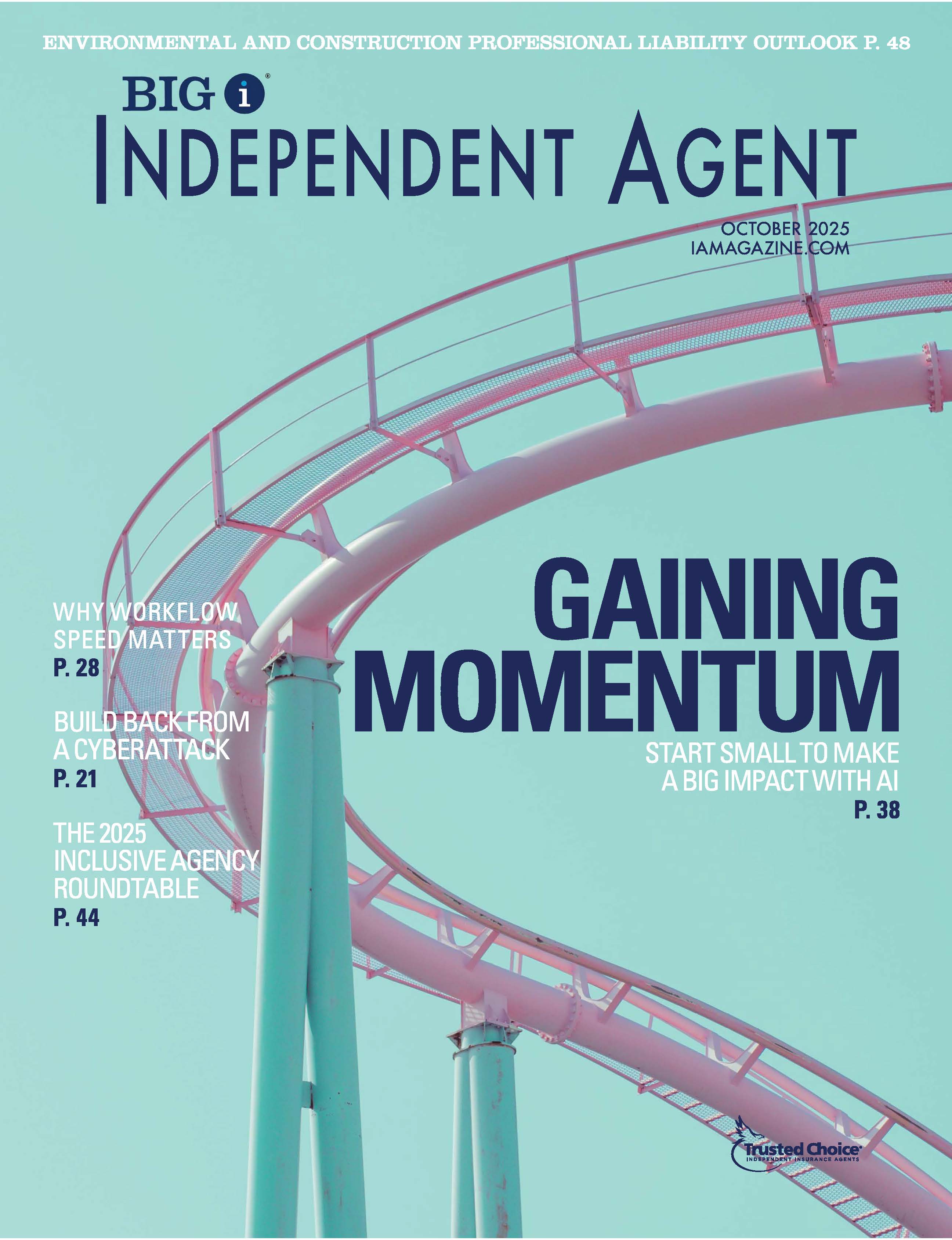5 Tips for Strengthening Your Content Strategy

By: Lora Wilson
Today’s commercial insurance buyers are more educated than ever before and have extremely high expectations of their agents. In a hardening market, your clients are doing their homework and gathering information via multiple channels to make more informed buying decisions.
So how do you break through the noise while also demonstrating your expertise? The answer lies in developing a thoughtful, proactive content strategy that both aligns with their needs and proves your value.
A strong content strategy is a key method for differentiating your company in a competitive, crowded market. Using content, you have the opportunity to showcase your agency’s unique viewpoint while also delivering commercial insights and expert guidance.
To put it simply, content strategy is all about being there. Being there when customers are researching; being there with the right message at the right time; being there in the format the customer wants to learn; and being there for you when you need it.
Here are five tips for refining your content strategy:
1) Know your audience. It’s no secret that one of the most important aspects of business-to-business sales is understanding your audience’s challenge and demonstrating how you can solve it. This applies to content strategy, as well.
The content you deliver should be about your client or prospect, not about you. Consider the size of their business, their location and what risks are unique to them.
Here’s where data and customer segmentation are critical. Segment your database and send different messages to different roles, based on company size, or specific to their line of business. Consider what types of custom messages can you send to each group you identify. The more you can segment the more you can make your targeted content plan work for you.
2) Plan, but stay agile. Planning ahead is so important when it comes to effective content strategy. Even planning one month out is a huge benefit, saving you time and effort in the long run.
An important consideration at this stage is cadence of your communications. You don’t want to be reaching out to your database too often or not often enough. Do some testing and see what works for your audience.
Another thing to consider in the planning stage is which communications channels you will use. If your audience sees the same message on multiple channels, such as email, your website and social media, it can resonate more deeply. Plus, people learn in different ways. Some will prefer a quick email or video, while others might prefer a longer-form blog post. Think about the different ways you can upcycle your content to fit different channels.
To make the process easier, consider investing in tools that will help you automate your communications through various channels. This will allow you to set up your campaigns in advance and will require much less ongoing time investment.
Finally, it’s important to be flexible and pivot your strategy when required. Major events, such as new legislation or a global pandemic, can impact your strategy and your response to that can be a key differentiator. The most engaging content is timely and relevant right now.
3) Provide quality content. It’s not enough to simply provide content—you need to provide great content that truly offers value and showcases your expertise.
So where does this content come from? With an investment in time and dedicated resources, agencies can create their own content in-house. Alternatively, you can look to third party content providers, such as carriers, industry associations or other vendors. The most effective content strategies typically utilize a mix of an agency’s own content combined with professional content from outside sources.
Format for good content can and should vary: longer-form, more formal pieces such as white papers or how-to guide; blog posts that can be a bit more informal and truly reflect your brand’s personality; and shorter, easy-to-digest pieces such as attention-grabbing videos or social media posts. Think of long-form content pieces as your base, but you need additional nuggets of information to supplement the story.
4) Organize your content. Often overlooked and one of the biggest content pitfalls for most organizations is content management, or how content pieces are stored and accessed. If your agency is like most others, your content is spread out in many different locations and you are wasting precious time hunting down the specific piece you have in mind—or worse, you don’t even know what content you have at your disposal.
The key to corralling your content is to store all your resources, whether they are owned or third-party pieces, in one central location. With everything stored in a single place you can find content much more quickly and can also gain a clearer understanding of your full library.
Once you have everything in a single location, you can organize further by establishing a naming structure, dating, foldering and tagging content in an intuitive way that will make locating the right pieces even easier. This is especially essential in our industry where information gets outdated quickly so you need to be using the most current version.
If you can easily access your content, you can spend more time on the important things, like serving your customers, planning your campaigns and managing leads.
5) Check your work. In the hustle and bustle of our workdays it’s easy to let communication campaigns run and never go back to see how they performed. Take some time to analyze which channels and messages are resonating best with your audience.
Review your key email metrics to help you improve your content and marketing strategy over time. For example, you can pull up your best-performing and worst-performing email in a given month and consider why one performed better than another. These learnings will help you refine your messages and strategy in the future.
Here’s the thing—a strong content strategy doesn’t happen overnight. But you can take small steps to make a big difference. Try implementing just one or two of the tips and tricks mentioned here to gain momentum and watch your communications evolve and increase in effectiveness over time.
Lora Wilson is vice president of marketing at Zywave, a leading insurance tech provider. She has more than 20 years of experience in marketing and educational services, building highly effective teams and creating programs to help companies grow.










